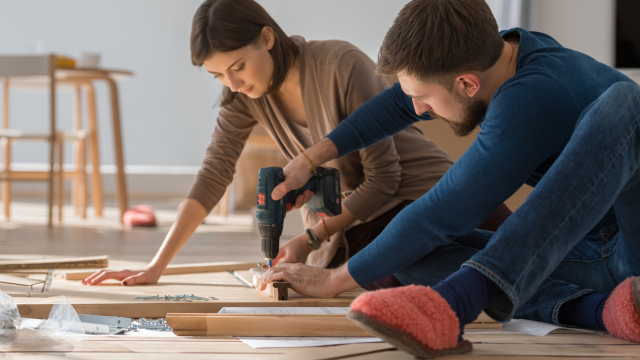Retrofitting Your Home
In an era of growing environmental consciousness and rising energy costs, retrofitting your home for energy efficiency could become a key method of reducing your carbon footprint and saving money on utility bills. Fortunately, there are a variety of strategies and technologies available to help you transform your residence into an energy-efficient haven. In this article, we’ll explore a range of retrofitting options that can enhance your home’s energy performance and contribute to a more sustainable future.
What Is ‘Retrofitting’?
Retrofitting refers to the process of upgrading or modifying an existing structure, system, or component to improve its performance, efficiency, functionality, or sustainability. This term is commonly used in various industries, including construction, engineering, architecture, and energy.
Conduct An Energy Assessment
Before embarking on any retrofitting project, it’s crucial to assess your home’s current energy consumption and identify areas that need improvement. Conducting an energy audit can help you pinpoint sources of energy waste, such as inadequate insulation, drafty windows, or outdated appliances. By understanding your home’s energy profile, you can prioritise retrofitting projects, and allocate resources more effectively.
Building Remodelling
Building remodelling, also known as renovation or renovation construction, involves making changes or improvements to an existing building’s structure, design, or layout. Factors such as insulation, ventilation, and heat loss need to be carefully considered to ensure that the energy consumed is used as efficiently as possible.
Upgrade Insulation
Proper insulation is a cornerstone of energy efficiency. Poorly insulated homes can lose a significant amount of heat in the winter and gain excess heat in the summer, leading to increased energy consumption for heating and cooling. Consider adding or enhancing insulation in your walls, loft, and basement. Modern insulation materials like spray foam, cellulose, and fiberglass can provide better thermal resistance and air sealing.
Seal Air Leaks
Air leaks around windows, doors, and gaps in the building envelope can result in substantial energy loss. Use weather stripping, caulking, and sealants to seal gaps and cracks, preventing unwanted drafts and maintaining a consistent indoor temperature. Addressing air leaks also improves indoor air quality and reduces the strain on HVAC systems.
Upgrade Lighting
Switching to energy-efficient lighting options, such as LED bulbs, can significantly reduce electricity consumption. LEDs are not only more energy-efficient than traditional incandescent bulbs, but they also have a longer lifespan, resulting in reduced maintenance costs as well.
Install a Smart Thermostat
A smart thermostat allows you to control your home’s temperature remotely and set schedules to optimise heating and cooling. These devices can learn your preferences over time and adjust settings accordingly, leading to energy savings without compromising comfort.
Upgrade Windows and Doors
Old, single-pane windows and poorly insulated doors can contribute to heat loss and gain. Consider replacing them with energy-efficient alternatives, such as double-pane or triple-pane windows with Low-E coatings. These windows provide better thermal insulation and reduce the transfer of heat between indoors and outdoors.
Harness Renewable Energy
Consider integrating renewable energy sources like solar panels or wind turbines to generate clean electricity. Solar/wind energy systems can help offset your home’s energy consumption and even allow you to sell excess power back to the grid, potentially earning you additional income.
Upgrade Heating and Cooling Systems
Old, inefficient heating and cooling systems can account for a significant portion of your energy bills. Consider upgrading to high-efficiency air source heat pumps that use less energy to maintain indoor comfort. Regular maintenance and filter replacements are also crucial to ensure optimal performance.
Other Ways To Keep Energy Bills Down
Reducing your energy usage is not only beneficial for the environment, but also for your wallet too. Here’s a few other things you could do to help keep your energy bills down:
- Unplug Electronics – Unplug chargers, computers, and other devices when they’re not in use, or use power strips to easily disconnect multiple devices at once.
- Use Natural Ventilation – Open windows and create cross-ventilation to cool your home naturally during mild weather, reducing the need for air conditioning.
- System Maintenance – Schedule regular maintenance for your heating, ventilation, and air conditioning systems to ensure they are operating efficiently.
- Wash Clothes with Cold Water – Using cold water for laundry reduces energy consumption compared to using hot water.
- Air-Dry Clothes – Whenever possible, use a clothesline or drying rack instead of a dryer to save energy.
- Limit Water Usage – Fix leaky faucets, install low-flow toilets and showerheads, and be mindful of water consumption to lower energy usage associated with water heating.
- Use Natural Light – Open curtains and blinds during the day to take advantage of natural sunlight and reduce the need for artificial lighting.
- Contain Heat – Keep windows and doors, especially on the ground floor, closed to prevent heat from escaping.
Consulting An Expert
Experts can accurately assess the unique energy needs and challenges of your home, identify optimal retrofitting opportunities, recommend suitable technologies, ensure proper installation, and provide cost-effective solutions that align with your specific goals and budget.
With almost 30 years experience, we’ve assisted hundreds of homeowners across the UK to retrofit their properties and increase their energy efficiency. Leverage our expertise to minimise the risks and to ensure that you chose the most suitable solution for you.
You can contact us here, or via;
01400 250572 | info@radiant-renewables.co.uk
